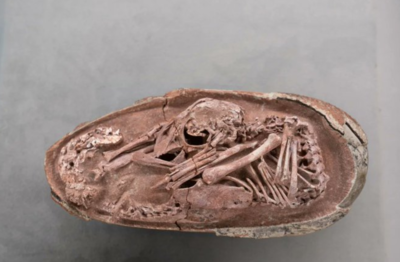ARTICLE AD BOX

Millions of years ago, long before humans ever walked the planet, dinosaurs ruled the Earth. These huge creatures that ruled the land, sky, and the seas. Their world was wild, untamed, and vastly different from the Earth we know today.
For over 160 million years, dinosaurs survived, evolved, and adapted to shifting climates and changing continents, only until a massive extinction wiped them out around 66 million years ago.Though the dinosaurs themselves are long gone, they’ve left behind traces of their existence in the form of fossils that still continue to amaze scientists and the public. These fossils, preserved in rock and earth, are like time capsules, offering rare glimpses into a world lost to history.
Be it in the form of giant footprints and fossilised bones or soft tissues, which tell a part of the dinosaur story.One such recent discovery is a dinosaur embryo still curled inside its fossilised egg and it has stunned the scientific community and brought us closer to understanding prehistoric life.
A glimpse into the past
According to scientists, the discovery of a 70-million-year-old dinosaur embryo inside a fossilised egg is one of the most extraordinary finds in recent paleontology.
The egg was uncovered in Missouri, a place that was once part of an ancient coastal environment. What makes this fossil so unique is not just the preservation of the egg, but that the embryo inside remained intact and undisturbed through millions of years of fossilisation.
The fossilised embryo has given a rare opportunity to observe a dinosaur in its earliest stage. Experts say the curled position of the embryo is especially interesting, as it strongly resembles how modern bird embryos are positioned before hatching.
Bird-like behaviour before birth
Another interesting aspect of this find is the embryo's posture. It is similar to what scientists call "tucking", a behaviour seen in bird embryos just before hatching. This posture helps the chick orient itself for a successful emergence from the shell, bringing to light the evolutionary link between dinosaurs and birds, and that they are the closest relatives..
Why didn’t it hatch?
Despite the beauty of the discovery, one big mystery remains, why didn’t this dinosaur hatch? Scientists are exploring several possible reasons, such as changes in the environment, deformities, or even predators. Since the embryo was found in such a well-preserved state, researchers hope continued analysis might provide some clues.



.png)
.png)
.png)
















 1 day ago
3
1 day ago
3









 English (US) ·
English (US) ·